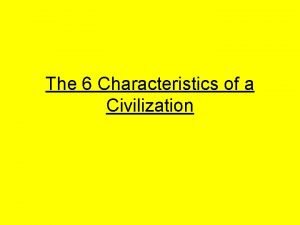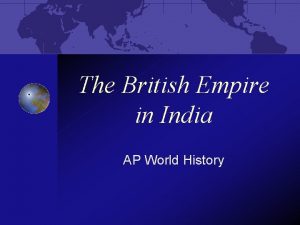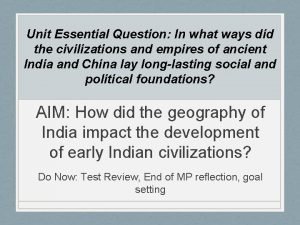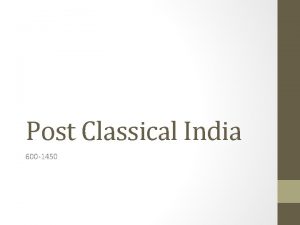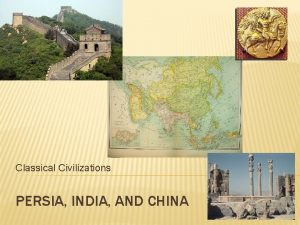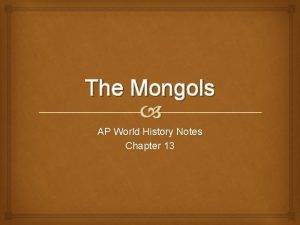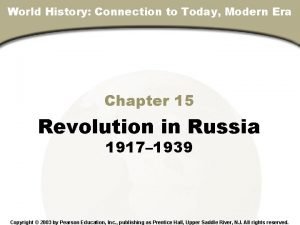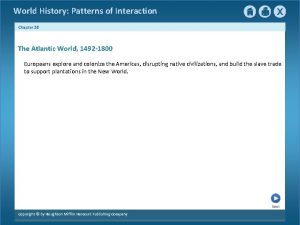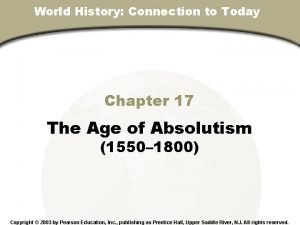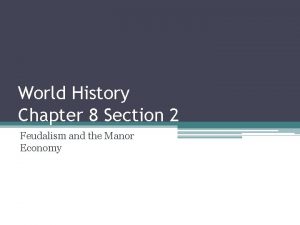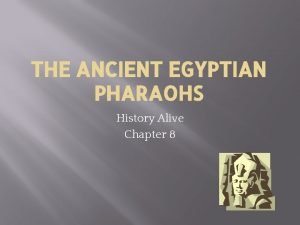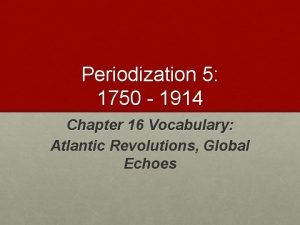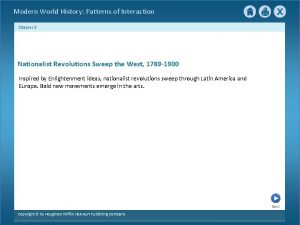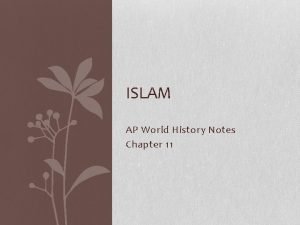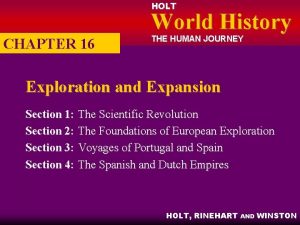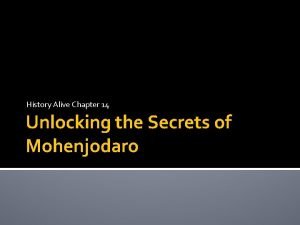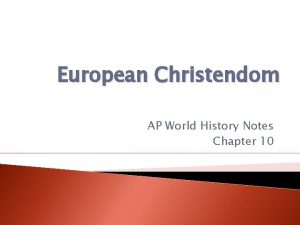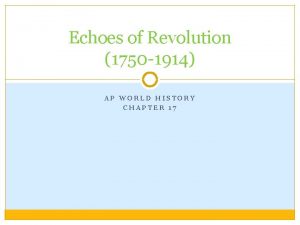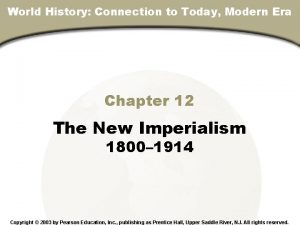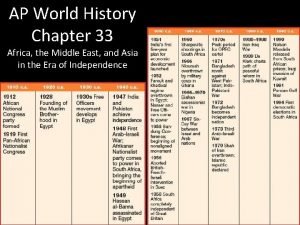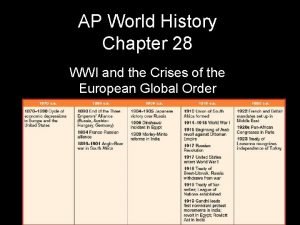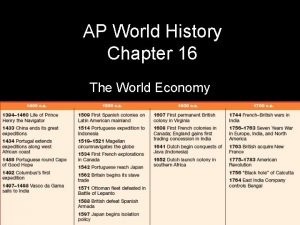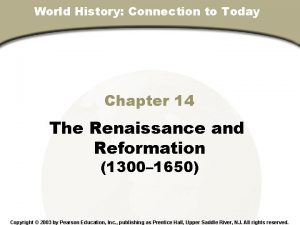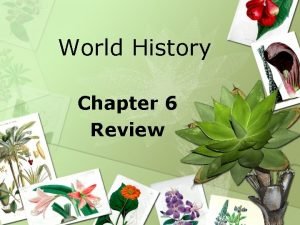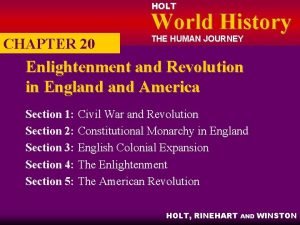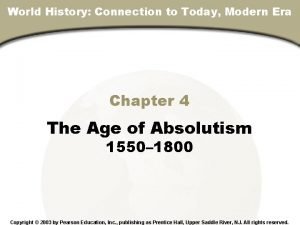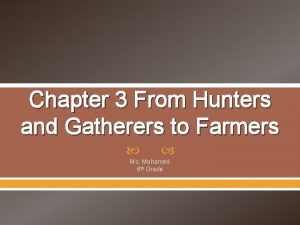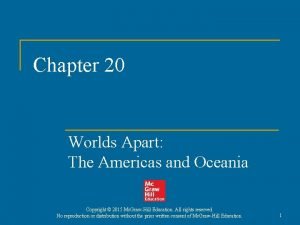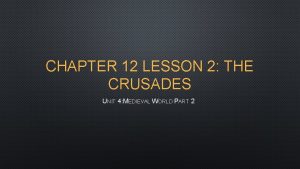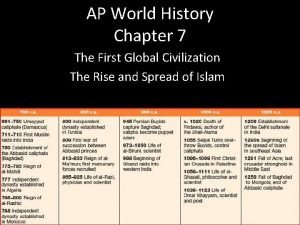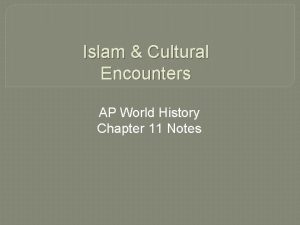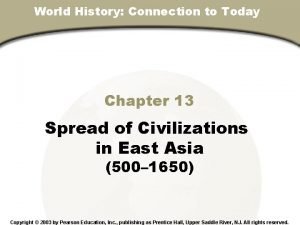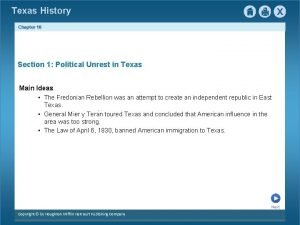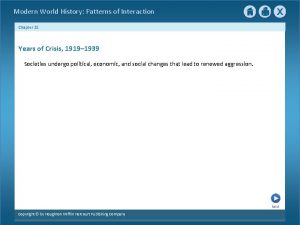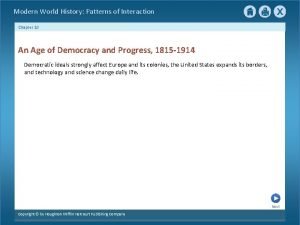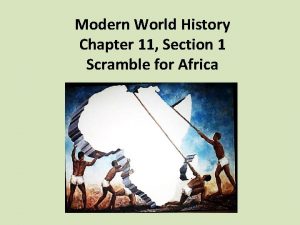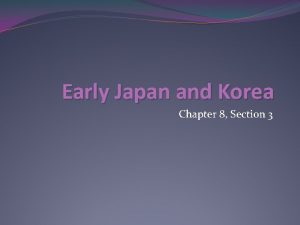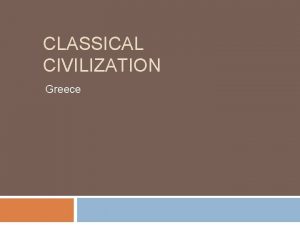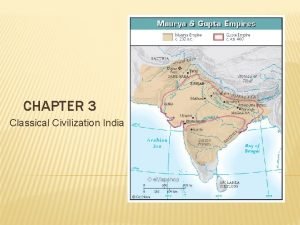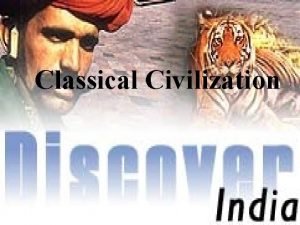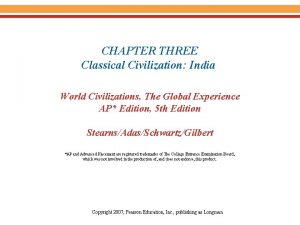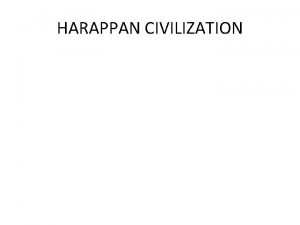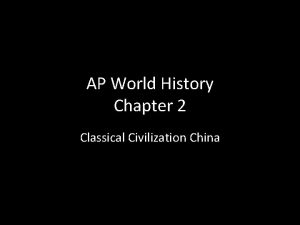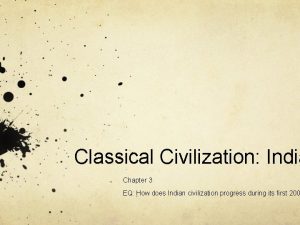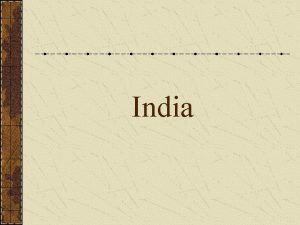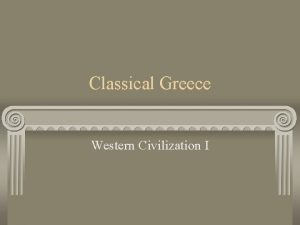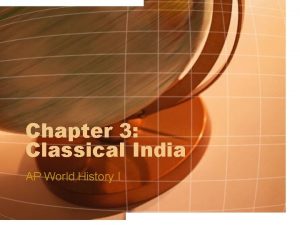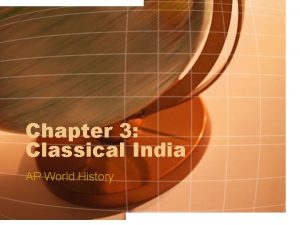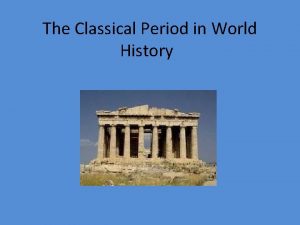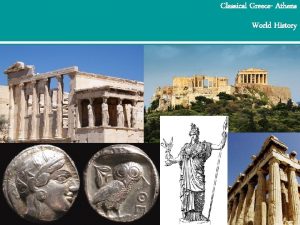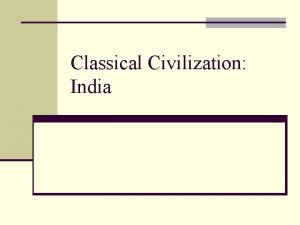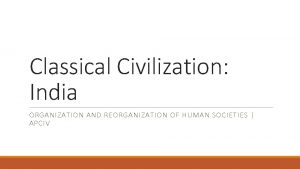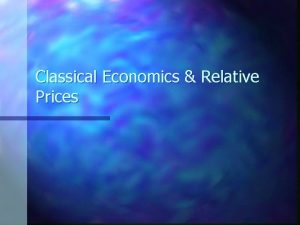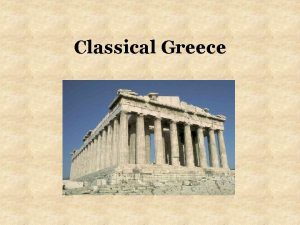AP World History Chapter 3 Classical Civilization India


















































- Slides: 50

AP World History Chapter 3 Classical Civilization India


Aryan Civilization • Indo European people who migrated across Europe and Asia. • No Archeological record of early Aryans. • Priests called Vedas kept oral stories that were passed down for generations. • The Vedas oral histories were written down around 1500 B. C. E

Aryan Society • Aryans loved fighting, drinking, and playing dice. • They broke their society into four groups. – Brahmins or Priests. – Kshatriyas or Warriors. – Vaisyas or merchants, artists, farmers and herders. – Sudras or natives conquered by Aryans. • Later the for groups were divided by economic status. • Slowly castes developed subdividing the people.


Aryan Religious Beliefs • Aryans were polytheistic. • • • Indra = God of Thunder, War= Weapon Thunderbolt. Varuna = God of Order. Agni = God of Fire = Messenger. Brahman = God of all things. Mystics = People who seek spiritual things. Rajahs = Elected warrior leaders.

Nomads to Farmers • The Aryans began to settle in villages then cities. • Rajahs became hereditary monarchs. • By 500 B. C. E many Rajahs controlled a new civilization of both Aryans and natives. • Written language of Sanskrit began to appear.


Mahabharata • India’s greatest epic poem. • Story of Aryans fighting each other. • Five royal brothers fight one battle that lasts 18 days.

Ramayana • The hero Rama must rescue Sita his beautiful bride from the demon king Ravana. • The monkey general Hanuman helps Rama rescue Sita. • Rama = ideal king. • Sita = ideal women.

Classical Age India • Alexander the Great. • We learn about the Maurya empire from a Greek diplomat.


Chandragupta, Maurya Empire • The first leader who conquered northern India. • The empire was maintained by a well organized Bureaucracy. • The government built roads, harbors, collected taxes, and had royal courts.

Asoka • The most honored Maurya emperor. • He conquered the Deccan region at the cost of 100, 000 dead. • He then converted to Buddhism. • He stopped all conquest and became a vegetarian. • He built stone pillars announcing peace and prosperity and helped unite a divided people.


Advances • Literature. – Fables, and folk tales in the Sanskrit language – Most famous play was Shakuntala. • Art. – Murals or wall paintings, Sexually vivid. • Architecture, stone temples, stupa’s or domes. – Lots of carvings. • Physicians. – Plastic surgery. – Vaccination of people against small pox. • Math. – Concept of Zero. – Decimal system based on 10.


Kushan Empire • Nomadic Empire that spread rapidly across the northern empire. • The Kushans adopted elements of the Hellenistic culture of Bactria. • They adopted the Greek alphabet to suit their own language



Gupta Destroyed • About the time of the Roman Empires collapse the White Huns overran the Gupta empire. • India split into many kingdoms for almost a 1000 years.

Many Gods or One • Hinduism has no founder but grew out of many cultures and people. • One of the worlds most complex religions. “God is one, but wise people know it by many names. ” • Brahman is the one god but people worship him as thousands of different gods.

Hindu Beliefs • Reincarnation – Rebirth of the soul. – Can be reborn up or down in the cast system. • Gurus – Great knowledge leads people as a teacher. • Mystics – Religious leaders




Varuna God of the Sky

Hindu Sacred Texts • Bhagavad-Gita. – Teaches duty over personal desires and ambitions.

The Goal of Life • Every person on earth has a atman or Brahman. • The goal is to achieve moksha or union with your Brahman. – You must free yourself of selfish desires. – It may take several lives to obtain. – Reincarnation is the rebirth of the soul.

Karma and Dharma • Karma deals with all actions in this life that affect his or her status in the next life. • All existence is ranked. Humans are at the top then comes animals, plants, and rocks. • Dharma is the duties that each class of people must accomplish to progress.

Opposition to the Brahmins • Some people rejected traditional Hinduism for a more extreme form.

Early Life • The early life of Gautama was spent in a palace surrounded by luxury. • Prince Gautama married and had a son. • Gautama was sheltered by his father who did not want him to become a traveling holy man.

The Search • Gautama was riding one day and came across a dead man, a sick person, and an old man. • He left his family to find a place without suffering. “why is their so much suffering in life? ” • He sat under a tree for 48 days pondering the mystery of life. • he answered the question, his name changed to Buddha. “the enlightened one. ” • Nirvana and Moksha.


Four Noble Truths • All life is filled with pain and suffering. • The cause of suffering is the desire for things that are really illusions, such as riches, power, and long life. • The cure for suffering is to overcome desire. • Overcome desire by following the Eightfold Path.

Buddhism and Hinduism Compared • Both Buddhism and Hinduism believe in the cycle of rebirth. • Buddhism grew out of Hinduism. • Both stress non-violence.


Buddhist Sacred Texts • The Tripitaka or “Three Baskets of Wisdom” – “Overcome evil with good. ” – “Overcome the liar with truth. ”

Two Sects of Buddhism • Theravada: Followed the original teachings of Buddha closely. • Mahayana: Worship Buddha even though Buddha taught the people not to worship him. • Afterlife with many heavens and hells.

Decline of Buddhism in India • Hinduism eventually absorbed some Buddhist ideas. • Hinduism added Buddha to their long list of Gods. • Muslim armies destroyed the few remaining Buddhist centers of learning in the North.





Priest Morning Rituals

The Upanishads • The Upanishads are philosophical texts considered to be an early source of Hindu religion. More than 200 are known. • All Upanishads have been passed down in oral tradition.

Kamasutra • It presents itself as a guide to a virtuous and gracious living. • A book on practical advice on sex.

Stupa’s • A stupa is a mound-like structure containing Buddhist relics, typically the remains of Buddha, used by Buddhists as a place of worship.

Economy and Society Patriarchal • arranged marriages • companionate Textiles • Iron working • Steel • Long-distance trade Indian Influence • Spread Via trade • Buddhism

China and India • Contrasts • Indian sensuality v. Chinese restraint in art • India more rigid socially • Similarities • large peasant classes • patriarchy
 6 traits of civilization
6 traits of civilization Ap world history chapter 25 africa and the atlantic world
Ap world history chapter 25 africa and the atlantic world British in india ap world history
British in india ap world history Harappan civilization in india map
Harappan civilization in india map Bad dangerous tour
Bad dangerous tour Post classical india
Post classical india The two classical civilizations of ancient india were the
The two classical civilizations of ancient india were the Classical india geography
Classical india geography Chapter 17 section 3 world history
Chapter 17 section 3 world history Chapter 32 assessment world history
Chapter 32 assessment world history Chapter 30 section 2 world history
Chapter 30 section 2 world history What was the counter-reformation?
What was the counter-reformation? Pastoralism ap world history
Pastoralism ap world history Chapter 15 section 3 world history
Chapter 15 section 3 world history Chapter 15 world history
Chapter 15 world history Ap world history chapter 15 notes
Ap world history chapter 15 notes World history patterns of interaction
World history patterns of interaction Chapter 17 section 2 world history
Chapter 17 section 2 world history World history chapter 8 section 1
World history chapter 8 section 1 Chapter 23 section 3 world history
Chapter 23 section 3 world history History alive chapter 8
History alive chapter 8 Chapter 16 vocab ap world history
Chapter 16 vocab ap world history Chapter 8 section 1 world history
Chapter 8 section 1 world history Chapter 11 ap world history notes
Chapter 11 ap world history notes Chapter 16 section 1 world history
Chapter 16 section 1 world history History alive chapter 14
History alive chapter 14 Chapter 10 the worlds of christendom notes
Chapter 10 the worlds of christendom notes Ap world history chapter 17 multiple choice questions
Ap world history chapter 17 multiple choice questions Chapter 20 ap world history notes
Chapter 20 ap world history notes Chapter 12 assessment world history
Chapter 12 assessment world history Ap world history chapter 33
Ap world history chapter 33 Ap world history chapter 28 outline
Ap world history chapter 28 outline Chapter 16 ap world history
Chapter 16 ap world history Chapter 19 assessment world history
Chapter 19 assessment world history Chapter 14 section 1 world history
Chapter 14 section 1 world history World history chapter 6 review
World history chapter 6 review Ap world history chapter 20
Ap world history chapter 20 Chapter 9 section 2 world history
Chapter 9 section 2 world history Chapter 4 section 4 world history
Chapter 4 section 4 world history Chapter 3 from hunters and gatherers to farmers
Chapter 3 from hunters and gatherers to farmers Chapter 20 the americas and oceania
Chapter 20 the americas and oceania Chapter 12 lesson 4 the late middle ages
Chapter 12 lesson 4 the late middle ages Ap world history chapter 7
Ap world history chapter 7 House of wisdom ap world history
House of wisdom ap world history Chapter 9 ap world history
Chapter 9 ap world history World history chapter 13 section 1
World history chapter 13 section 1 World history chapter 10 section 1
World history chapter 10 section 1 Chapter 15 section 2 world history
Chapter 15 section 2 world history Chapter 10 section 1 world history
Chapter 10 section 1 world history Chapter 11 section 1 the scramble for africa answer key
Chapter 11 section 1 the scramble for africa answer key Chapter 8 section 3 world history
Chapter 8 section 3 world history
